Plant Profiles dive deep on one plant variety each month. They are meant to provide you with enough information to make good growing decisions. A desire to grow gorgeous flowers is one thing. However, discerning if a particular plant is right for you and your climate is a whole other ballgame.
My intention here is to give you as much practical information to make these decisions. However, I’m going one step further and taking you completely behind the scenes to share exactly what has worked for us as well. For this reason, Plant Profiles are broken up into what I’m calling the “Nuts and Bolts (N&B)” and “Behind the Scenes (BTS).”
If you haven’t already, please be sure to read the FFY Introduction to learn more about how Plant Profiles are organized.
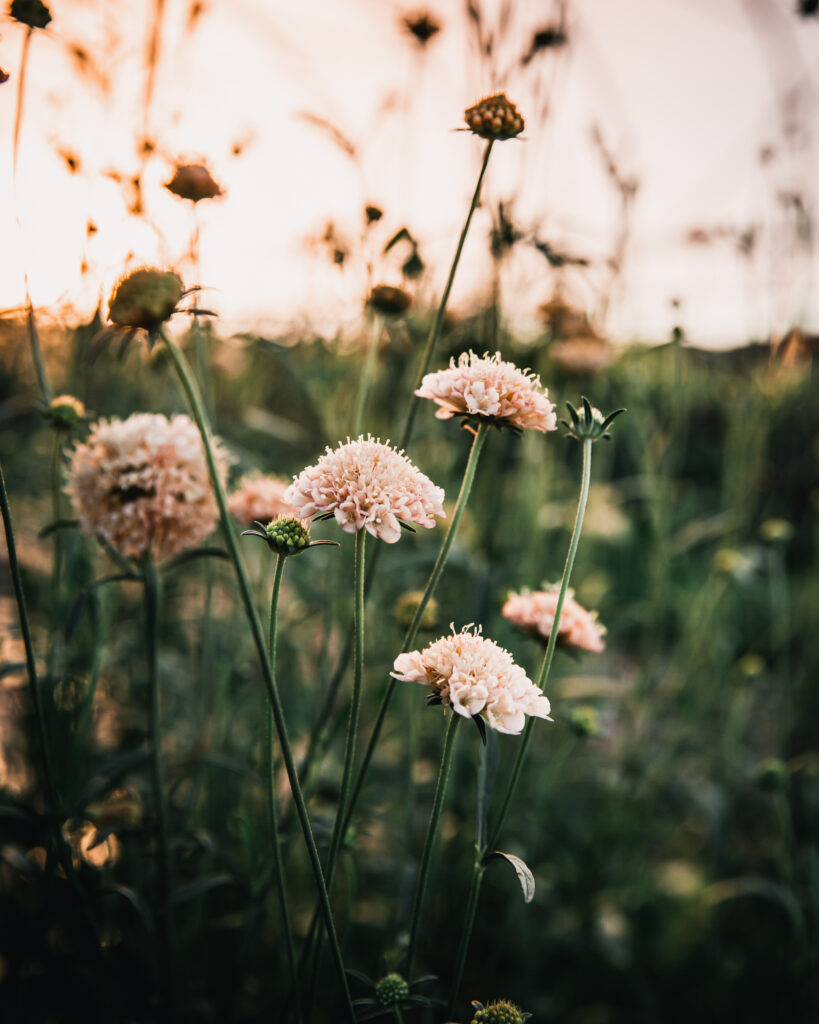
Primary Sources
The primary sources for the N&B portion come from:
- Postharvest Handling of Cut Flowers and Greens: A Practical Guide for Commercial Growers, Wholesalers & Retailers (Dole, Stamps, Carlson, et al).
- Specialty Cut Flowers, 2nd Edition, Revised & Enlarged (SCF): Industry standard for both new and experienced growers on the production of annuals, perennials, bulbs, and woody plants for fresh and dried cut flowers (Allan M. Amritage and Judy M. Laushman)
- Johnny’s Selected Seeds (Johnny’s): Johnny’s has been in the business for 50 years, with a research farm dedicated to finding the best seeds and tools for farmers and gardeners
- BOSTON Ornamental Terminal Prices. Specialty Crops Market News Federal – State Market News Service, USDA (as of 14-FEB-2023
- Farmer Bailey’s website: Bailey Hale is a past Regional Director of the ASCFG, seed-crop producer, plug broker, and a leading farmer-florist expert)
- Danziger Scabiosa Growing Guidelines & Updates (Scoop Scabiosa breeder)
- The Cut Flower Handbook: Select, Plant, Grow, and Harvest Gorgeous Blooms (Ziegler & Graven)
Zone Considerations
- Bailey Hale and Thomas McCurdy’s previous farm, Ardelia Farms, is located in Zone 4a Vermont
- Johnny’s Selected Seeds research farm is located in Zone 5a Maine
- Lisa Mason Ziegler’s farm, The Gardener’s Workshop, is located in Zone 7a/8b Virginia
- My farm, Petal Back Farm, is located in Zone 4b Wisconsin
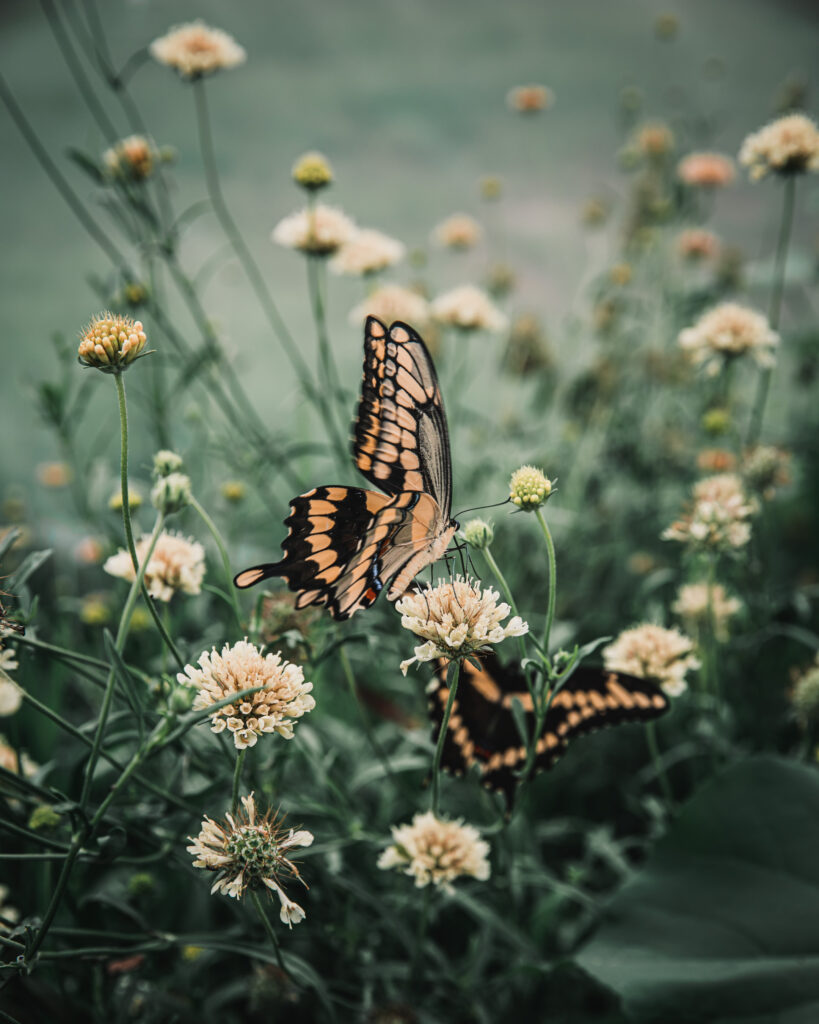
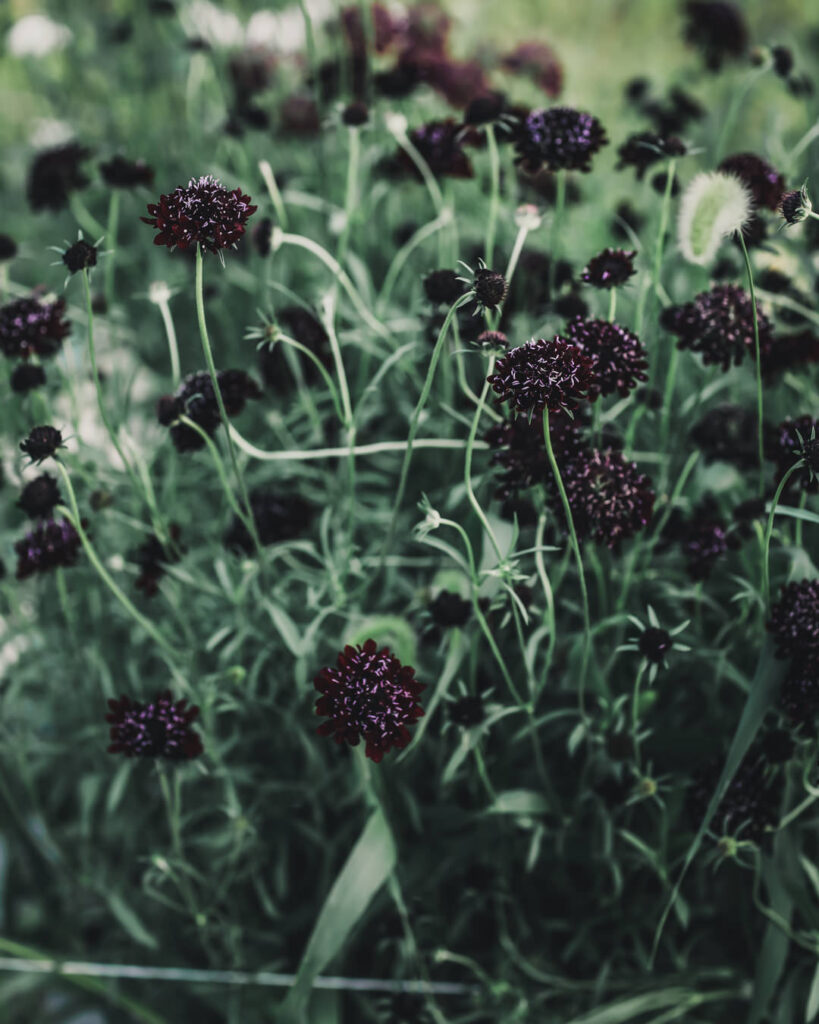
General Information: N&B
- Latin Name Name: Scabiosa atropurpurea (Scoop: Hybridof S. atropurpurea and S. caucasica)
- Common Name: Pincushion, Mourning Bride
- Origin: Southern Europe
- Days to Maturity: 90–100 days
- Life Cycle: Annual (but there are perennial varieties)
- Spacing: 6–15″
- Height: 24–48″ (but Scoop Scabiosa can get even taller)
Scabiosa belongs to the Dipsacaceae family. There are about 80 species most originating in temperate regions (Danziger). Scabiosa is a wonderful cut flower and great for beginners. It’s a hardy annual, meaning it can tolerate cooler temperatures, but the annual varieties are also more heat tolerant. It’s easy to grow and versatile for the flower farm. Scabiosa works well for market bouquets, as well as more high-end design work.
General Information: BTS
Although harvesting scabiosa leaves a lot to be desired, I absolutely adore every other aspect of it. Aesthetically, it has the sweetest vibe and I love it for design work. It brings out that natural, garden style in arrangements. Although it’s wiry stems are tedious to harvest and clean, they are so easy to weave into arrangements and bridal bouquets. On top of that, scabiosa is prolific, easy to grow, and pest/disease resistant.
In 2023, I tried growing Bon Bon Scoop Scabiosa for the first time, and I fell in love! It’s pricey, so I was on the fence, but I’m so glad I did. The are three main reasons I loved it so much.
First, and perhaps most importantly, is that they came on during that gap between spring and summer flowers. Flowers can feel scarce during this time, so that is clutch for me!
Second is that these babies CRANK out blooms! Farmer Bailey noted it’s not unusual to get 20–30 stems per plant and most complaints are that they are TOO productive! I would agree that this was my experience as well. I cut off those babies SO much and yet I still fell behind on harvesting them.
Third is that they are super fluffy and bigger than regular scabiosa, so they fill out a bouquet more. Young flower heads (before the florets start to open) were also large and made really great additions to boutonnieres.
So, I’m including both the regular annual variety as well as this hybrid in this plant profile (scoop scabiosa are a hybrid of S. atropurpurea and S. caucasica).
What I love most about scabiosa as a cut flower:
- Easy to grow
- Good vase life
- Playful stems
- Fabulous for design (especially garden style)
- Popular with customers
- Extremely prolific
- Attracts pollinators
- Can be used out of water for wearables
- Pest/disease resistant
- Sweet honey scent
But every rose has its thorn, right? Potential shortcomings:
- Tedious to harvest
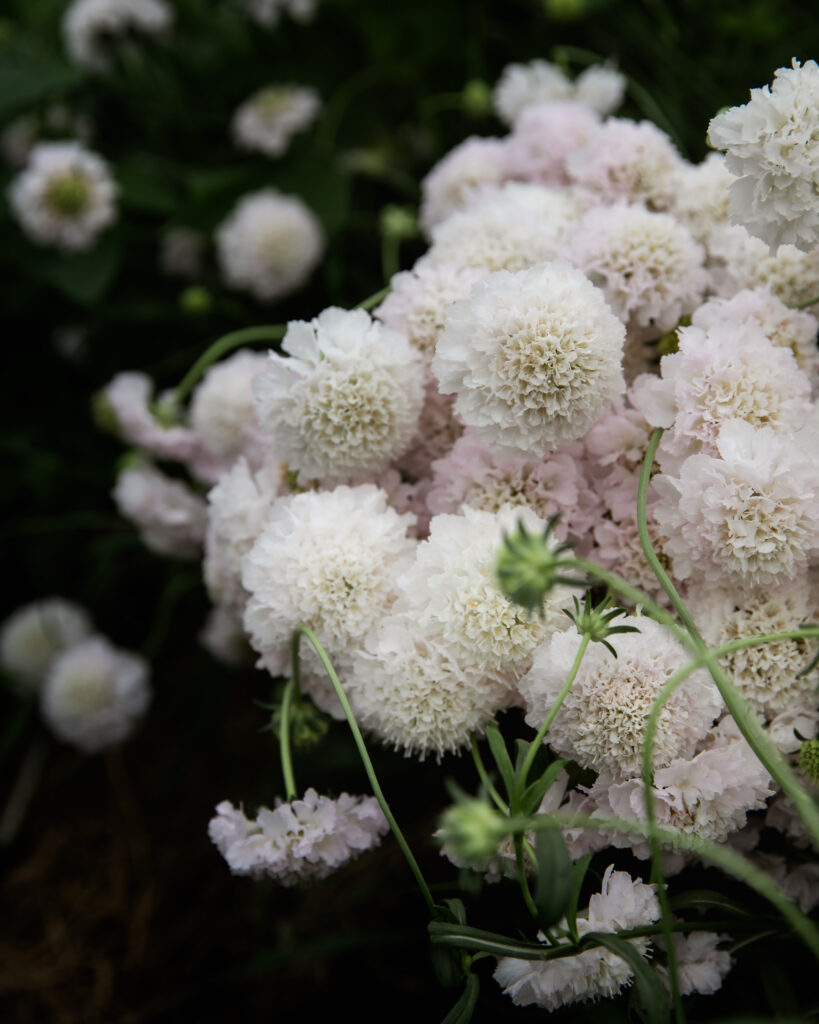
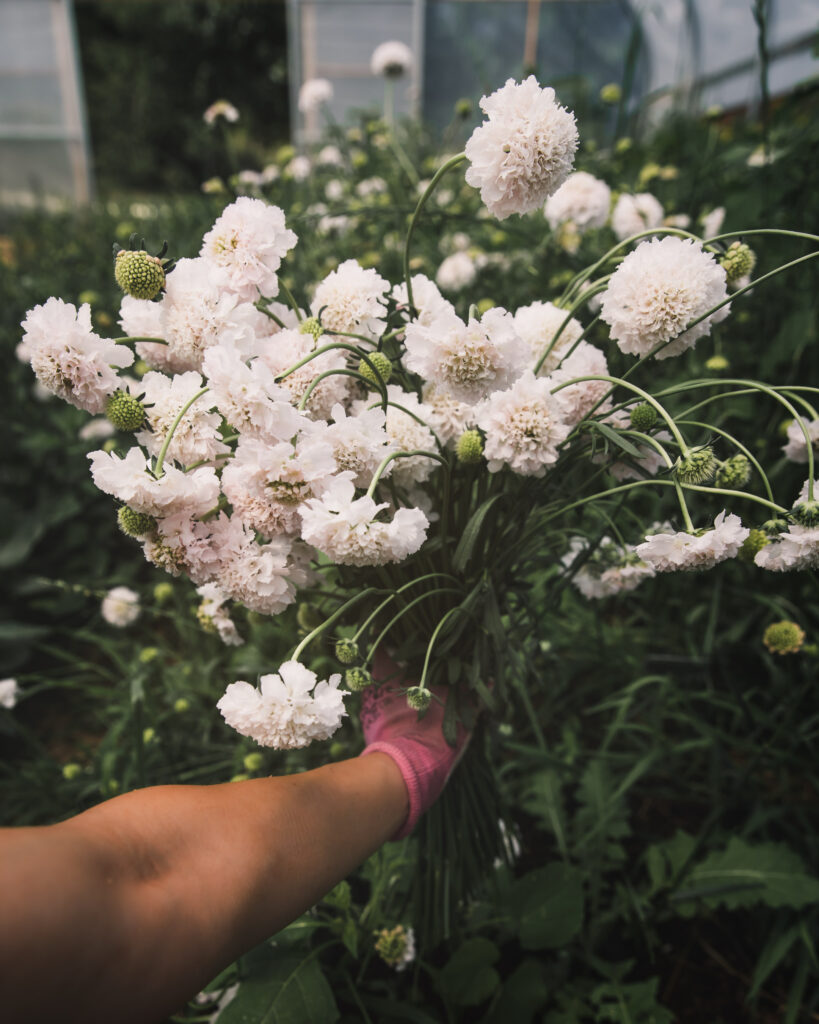
Propagation: N&B
Johnny’s recommends sowing 4–6 weeks before planting out. Days to germination: 10–12 days at 65–70F (18–21C). Barely cover as light aids germination. Transplant to cell packs or larger containers when the first true leaves appear. If using soil blocks, Ziegler recommends 3/4-inch (2 cm) soil blocks. Grow transplants at 50–55F (10–13C) to keep the plants from stretching (SCF). Harden off and transplant outside after the last frost.
Scoop Scabiosa can be purchased as plugs through Farmer Bailey. Transplant within 2 weeks of arrival or bump up into a larger cell until you can transplant.
Propagation: BTS
Other than the Scoop Scabiosa, we grow our scabiosa from seed, sown in 72-cell trays. I do not bump them up, they go straight into the field at this size.
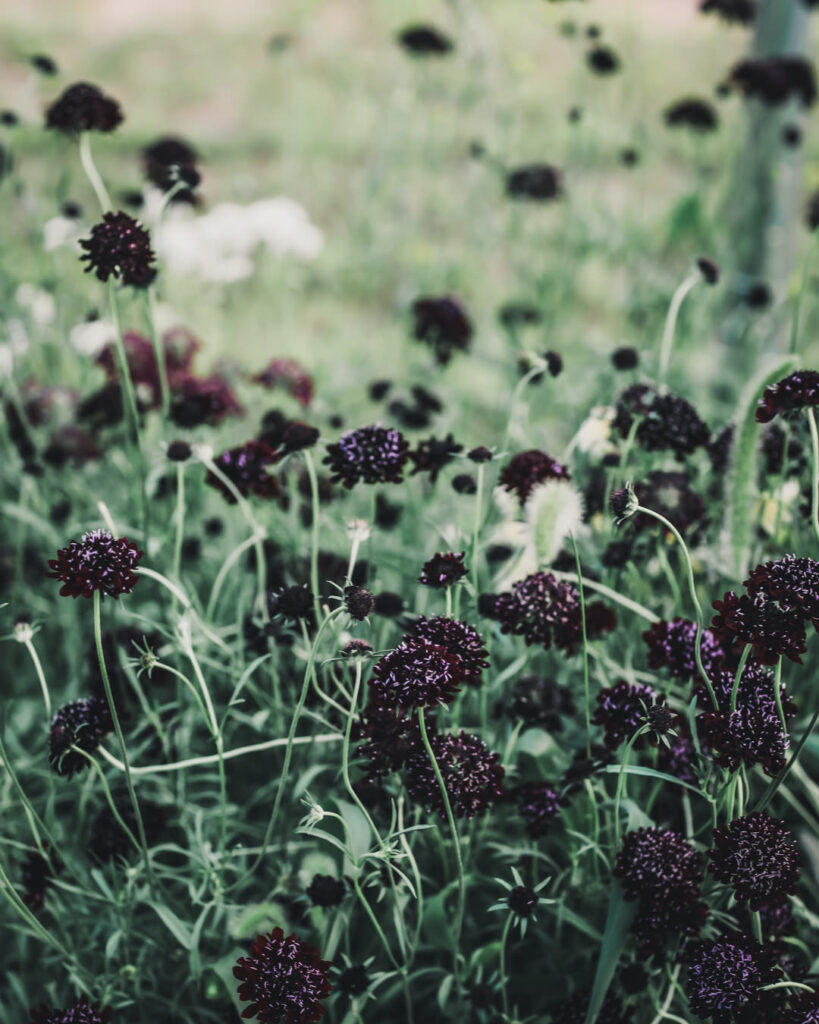
Environmental Factors: N&B
Scabiosa prefers full sun. SCF notes that temperatures below 55F (13C) are best for plant growth but that the annual varieties tolerate heat better. Similarly, Farmer Bailey recommends planting when soil is cool (below 55F). Flowering occurs as days lengthen and temperatures increase. Interestingly though, they note that warmer temperatures lead to thinner stems.
Farmer Bailey lists Scoop Scabiosa’s temperature range from 32–80F (0–27C). FB also notes that Scoop Scabiosa plants may stop production during warmer months, but then they’ll regrow as autumn temperatures settle in. Annual scabiosa may also do this. Cut back plants to a few inches and allow to regrow.
Environmental Factors: BTS
We plant our scabiosa out early (late March/early April for the tunnel) and late April through May in the field. Our summers (and even our springs) can get unbearably hot, but the scabiosa usually keep cranking straight through July regardless (we do have thin, wiry stems though).
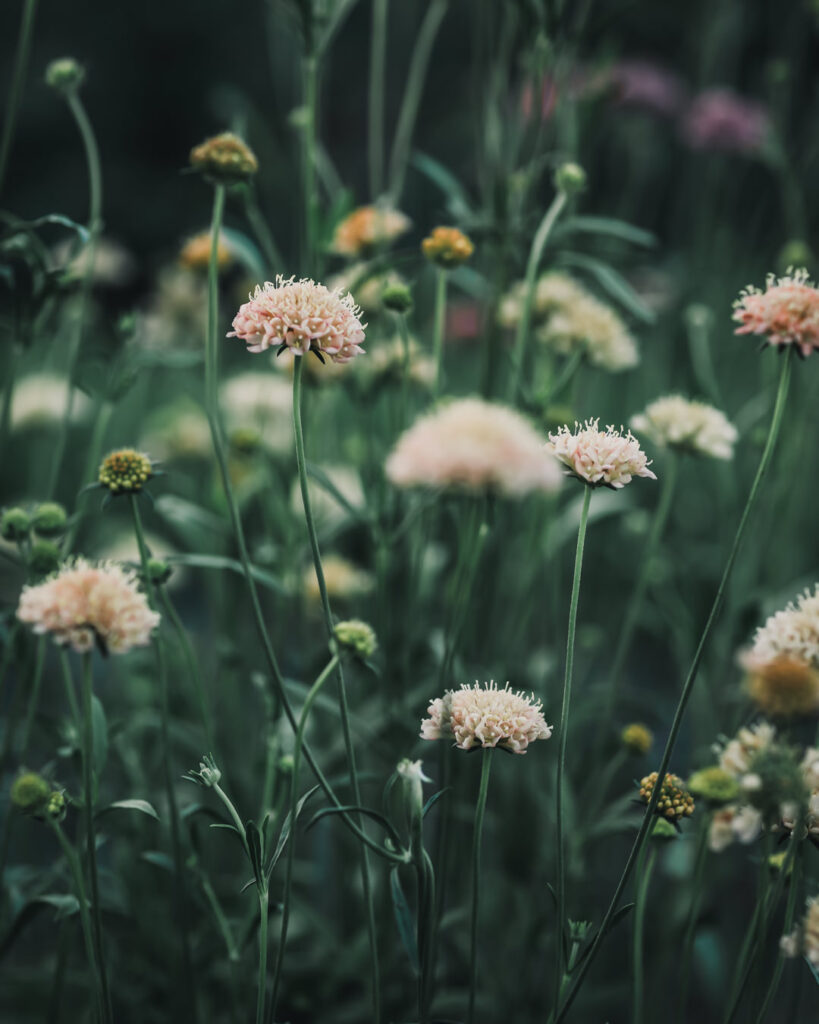
Transplanting, Spacing, Support: N&B
Transplant scabiosa in either the spring (for summer production) or fall (for overwintering). Space annual varieties 6–15″ apart (SCF). Farmer Bailey recommends transplanting Scoop Scabiosa at 6″ spacing with two rows per bed. All sources recommend using netting, though it does add to the tediousness of harvesting
Transplanting, Spacing, Support: BTS
We plant our scabiosa out early (late March/early April for the tunnel) and late April through May in the field. We transplant our annual scabiosa at 9-inch spacing and Scoop Scabiosa at 6″ spacing, two rows 12 inches apart.
I’ve grown scabiosa both with and without support. Some plants will definitely topple over without support, but hey, they make for fun stems. Netting is advised, I just try to get away without it sometimes. The Scoop Scabiosa did a good job supporting itself, but again, netting is recommended.

Successions: N&B
Scabiosa is prolific and you can typically get multiple harvests off of a plant, but successions every 3–4 weeks ensures a steady supply of quality stems.
For Scoop Scabiosa, Farmer Bailey recommends keeping spent flowers cut off to encourage more bloom production. “In hot summer locations, the plants may stop production for a couple months and then regrow as autumn temperatures settle in. Cut back the plant to a few inches and allow to regrow.”
Successions: BTS
We typically plan for 2 to 3 successions of scabiosa. One in the high tunnel early (Scoop) and 1 to 2 later in the field (annual). I haven’t tried overwintering in our high tunnel but it might be worth the experiment.
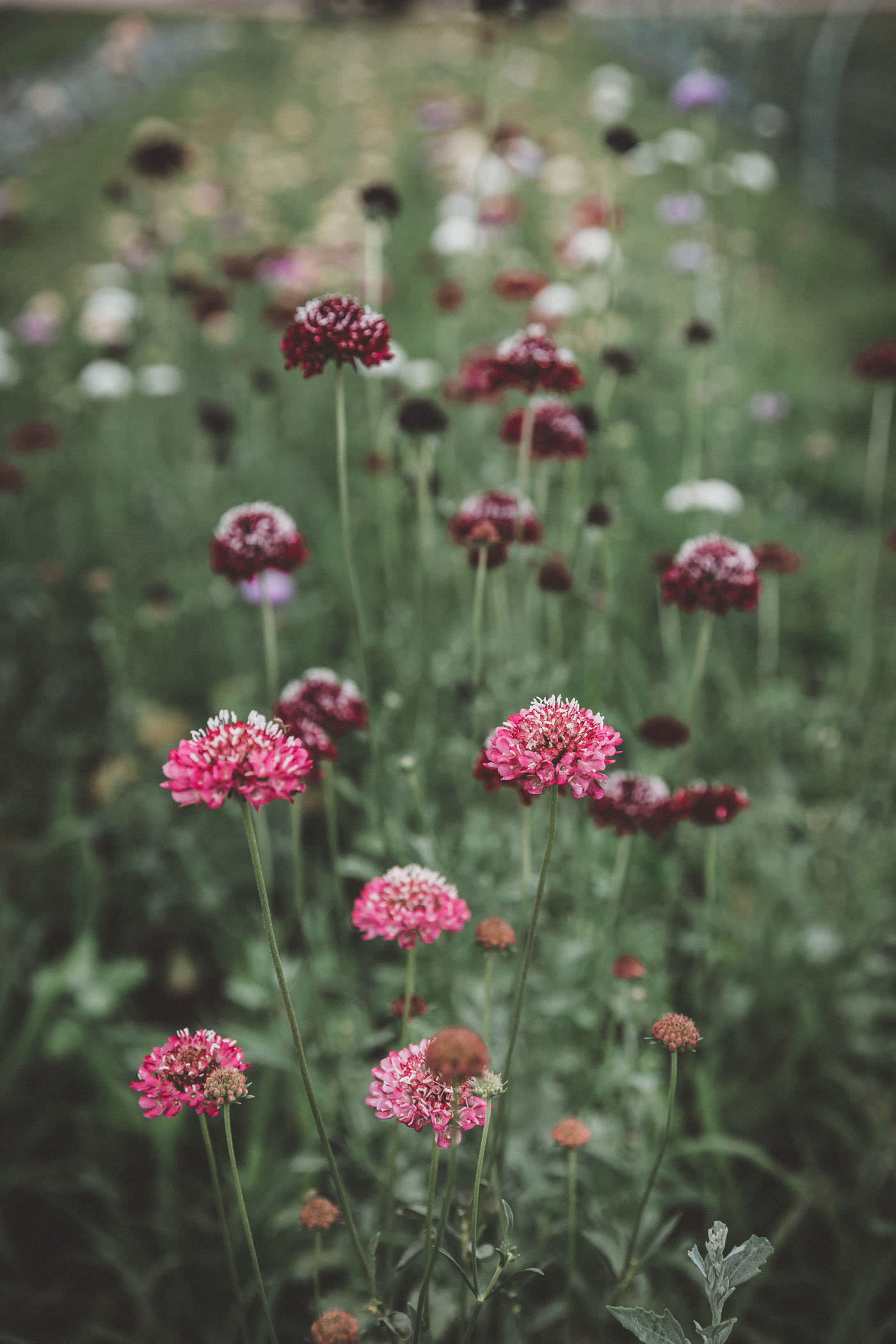
Nutrition: N&B
SCF notes that scabiosa are generally low maintenance and are hardly affected by fertility. Bailey recommends well-drained soil of medium fertility. Danziger suggests a more dialed-in fertilization schedule:
“In the early growth stages the fertilizer level of nitrogen potassium proportions should be 1:1 and at a level of approx. 100-150 PPM. Later on, the proportion between nitrogen and potassium should be 1:1.5. 150 PPM nitrogen with 225 PPM potassium. Potassium level is increased especially when growing under structures. Phosphorus level : 20-40 PPM.”
Nutrition: BTS
We fertilize our fields organically based on soil tests, and we do not fertilize for each crop individually. I have an eBook that outlines exactly how we do this. I’ve made that available for you here.
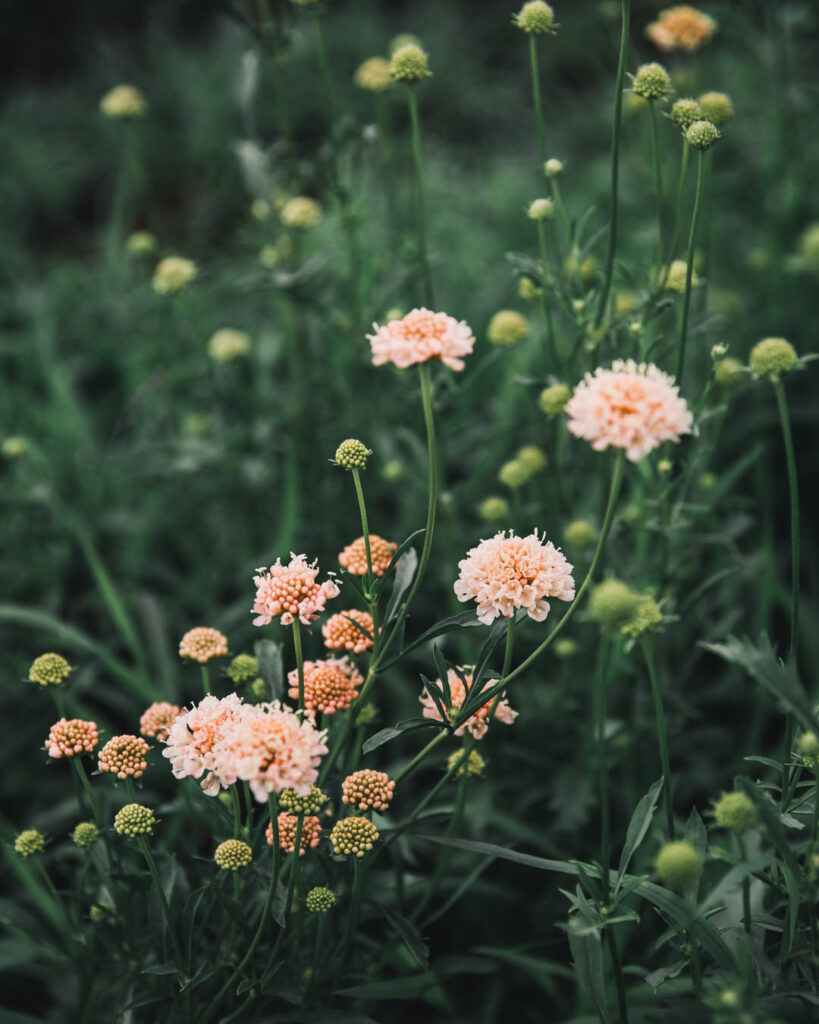
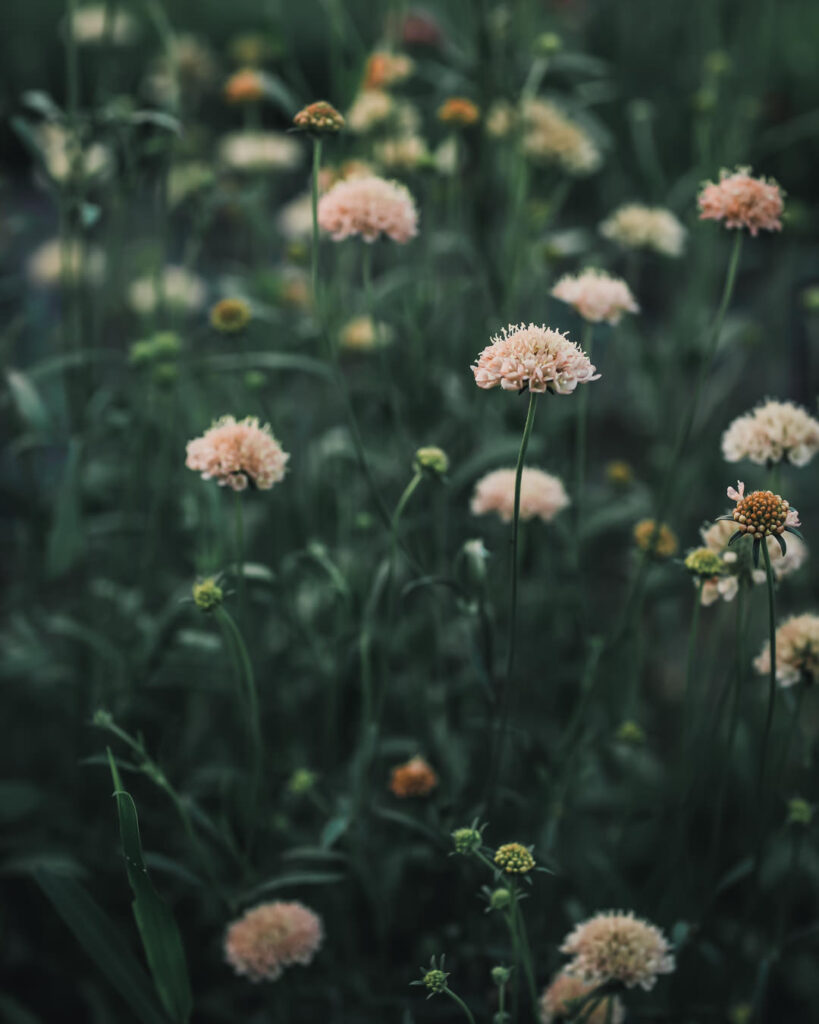
Drainage & Irrigation: N&B
As noted previously, scabiosa is easy to grow and fairly low maintenance, but it will benefit from regular watering. Bailey recommends well-draining soil.
Drainage & Irrigation: BTS
At our farm, we have gossil-loamy sand, meaning that our soil is more sand than loam. It actually drains excessively to the point of leaching nutrients. Our biggest difficulty is keep plants irrigated, especially in dry spells. For this reason, we do have drip irrigation installed on all of our beds at the home farm.
Pinching: N&B and BTS
While plants can be pinched, it’s not necessary due to their growth habitat. Farmer Bailey notes that Scoop Scabiosa plugs may already be pinched prior to arrival. Danziger notes that pinching will result in multiple shoots but that not pinching will result in flowers up to a month earlier. They suggest pinching some, while leaving others. For pinching, they recommend doing so above the fourth node–about 10 centimeters above ground level.
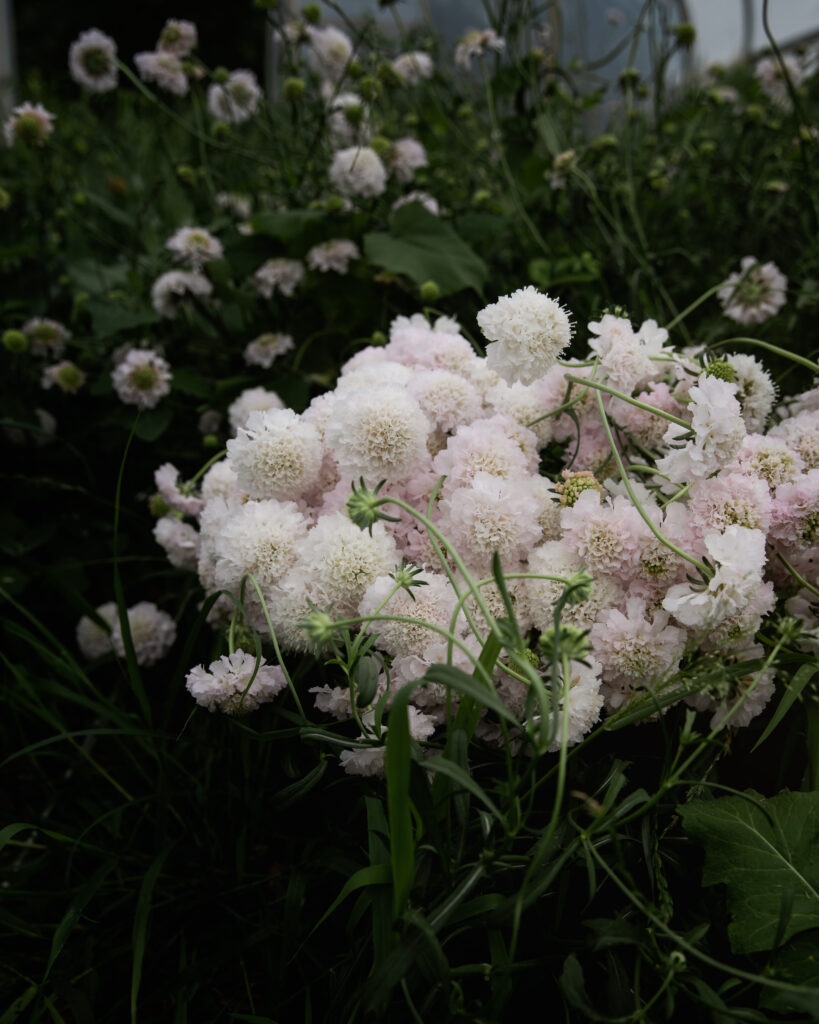
Bloom Period: N&B
First-year flowering plants begin in mid-July. Mowing after seed pods begin formation leads to another harvest window in September. Subsequent years’ flowering (overwintered) begins a few weeks earlier (late June) (Johnny’s).
Bloom Period: BTS
Our high tunnel scabiosa was ready to harvest in late June. Field scabiosa is 2 to 3 weeks later in later in mid-July.
Overwintering: N&B
Scabiosa can be overwintered, but colder zones will need a high tunnel. Transplant 3-4 weeks before last frost. According to Ziegler, winter low temperature survival is 10F (–12C).
Overwintering: BTS
I’ve never overwintered scabiosa, but I’d like to trial some in the high tunnel.
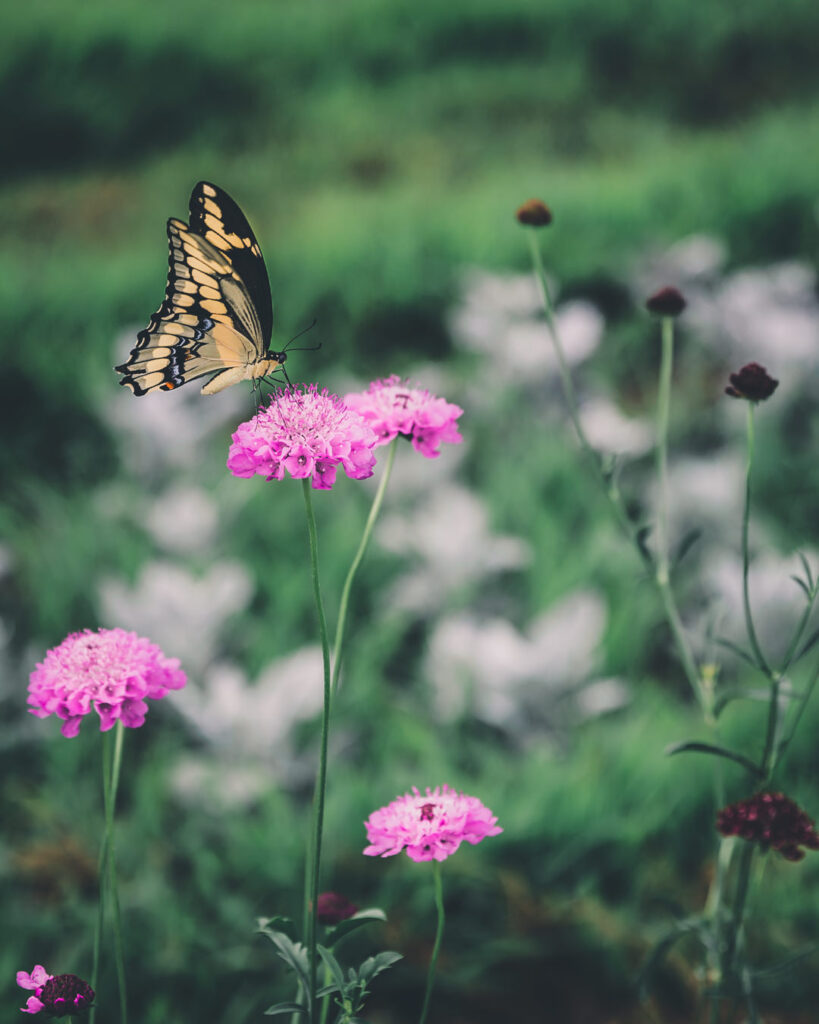
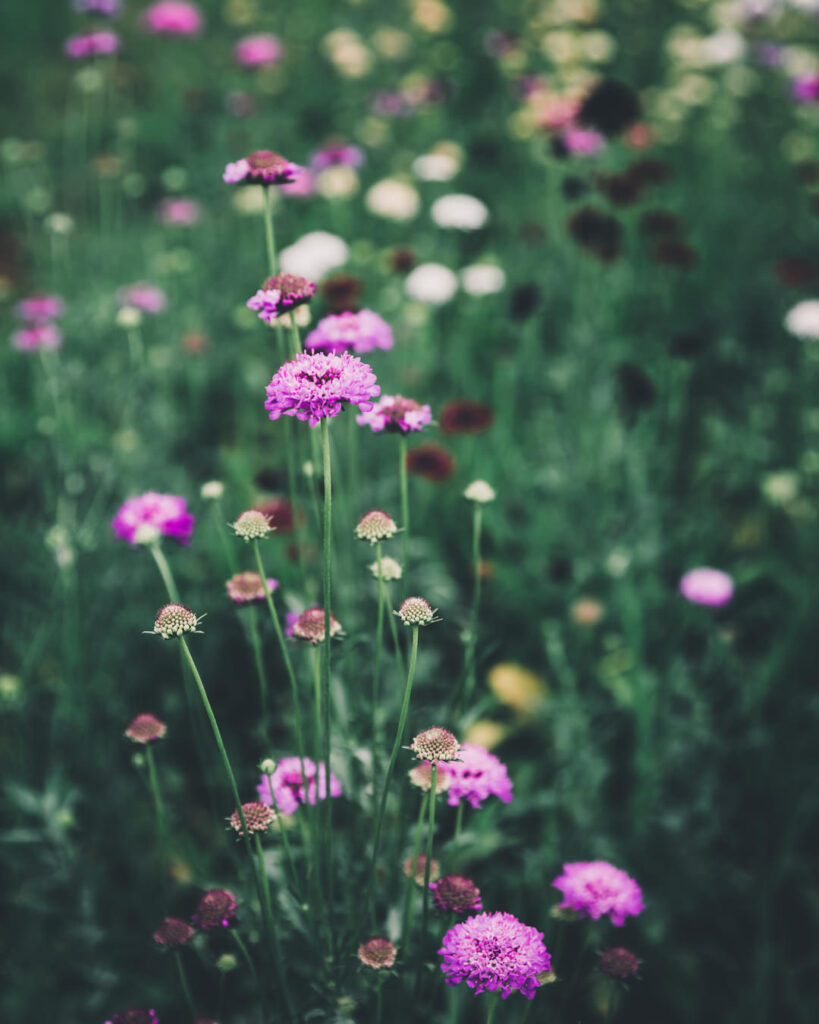
Harvest & Post-Harvest: N&B
Johnny’s recommends harvesting when the flower cluster is 3/4 open, more open for dried. Postharvest Handling recommends harvesting when still in bud stage or just beginning to open. For Scoop Scabiosa, Farmer Bailey says to harvest when 1/3 of the florets are open or when the first ring of florets has opened around the outside of the flower. Holding solution will increase vase life by 1 to 3 days. Expected vase life is 7–10 days.
Johnny’s reported that Charles Little of Eugene, Oregon-based Charles Little & Co, noted this on harvest: “They’re tedious to harvest, so it’s a complicated crop. But it’s so popular and easy to sell. We have raised our price on it, and customers still buy it. When harvesting, instead of lining up the heads (to have a uniform bunch of stems), we line up the base of the stem to make the bunch. It’s irregular; short stems are mixed with tall stems, but it gets cut, put in water and into the cooler. Later, as we process for orders, we sort and grade by stem lengths.”
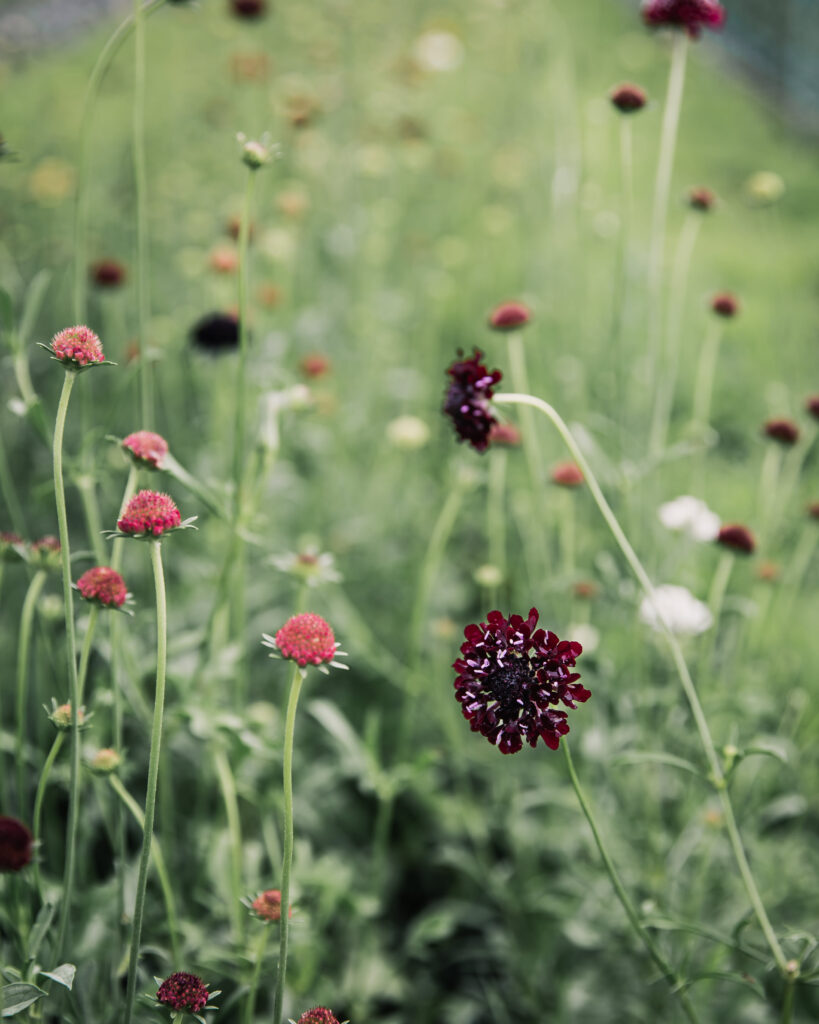
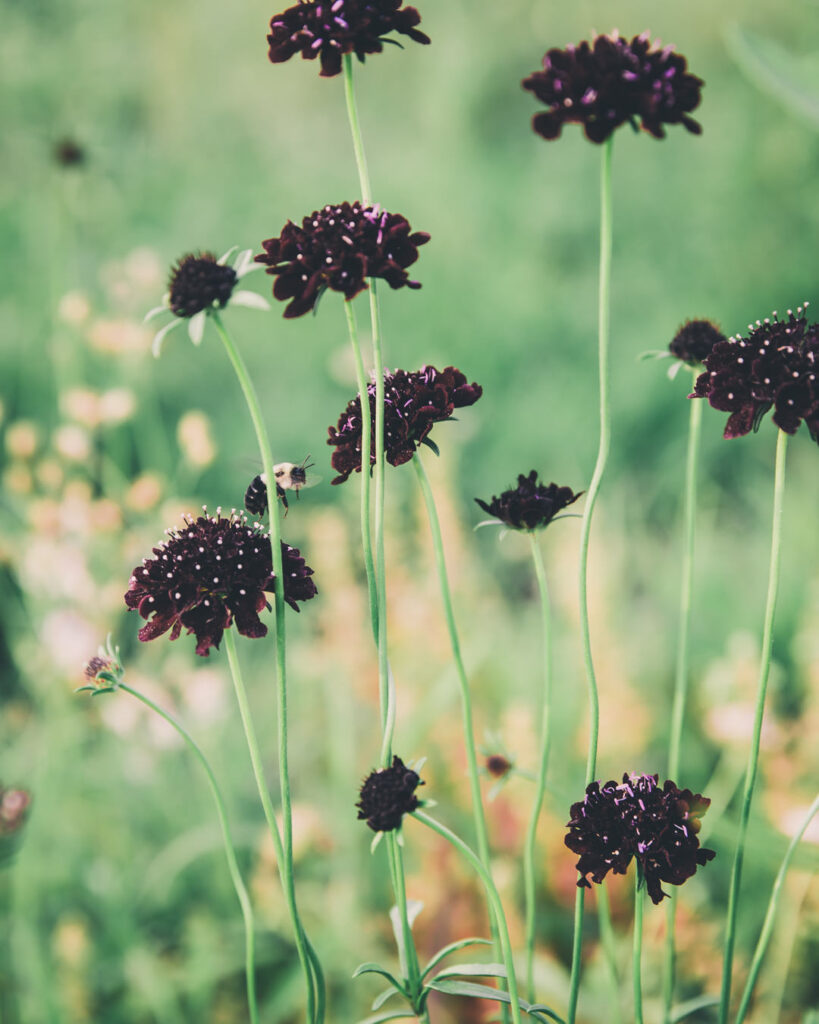
Harvest & Post-Harvest: BTS
We harvest at the stages as recommended above (sometimes we catch some earlier than others) and use a holding solution. I’m interested in experimenting with the harvest technique by Little, but I have not tried it yet. They are painfully tedious to harvest.
Pests & Disease: N&B
Scabiosa is very pest and disease resistant. In fact, it’s well known for attracting beneficials! If grown in a high tunnel or greenhouse, aphids or thrips can occasionally be an issue. Danziger also notes downey mildew as a potential disease issue.
Pests & Disease: BTS
We’ve never had any major issues with scabiosa.
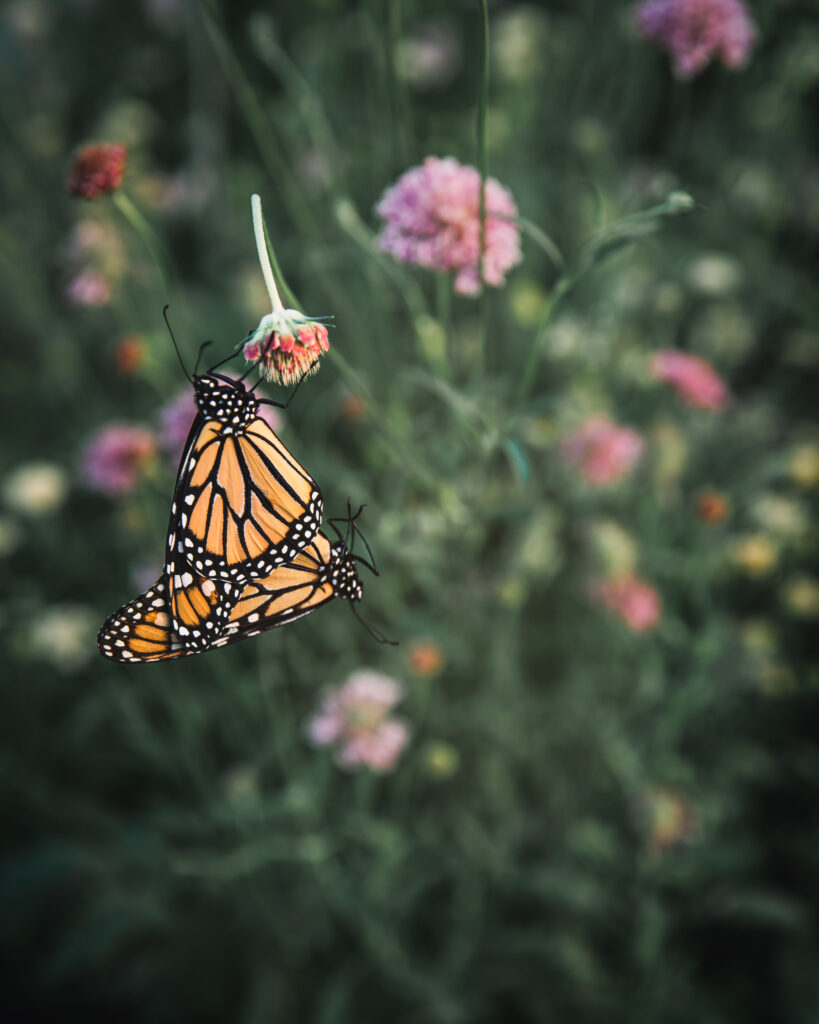
Variety Selection: N&B
SCF recommends ‘Formula Mix’ which can be found at Johnny’s (along with individual colors). Farmer Bailey has a number of the Scoop Scabiosa varieties.
Variety Selection: BTS
‘Formula Mix’ is a great bang for your buck, but choose specific colors if they work better for your palette. I love the ‘Formula Mix’ for market bouquets and a wide range of colors.
‘Fata Morgana’ comes in a range of colors from soft, creamy yellow to blushy-pink hues. I love, love it for wedding work!
‘Black Knight’ is an elegant, moody deep burgundy. Perfect for high-end design.
‘Star Flower’ is a super fun and unique variety known for its seedpod rather than the flower. The pale blue blossoms transform into highly decorative, bronze-colored geometric and globe-shaped seed heads.
As far as Scoop Scabiosa, I’ve only grown ‘French Vanilla Bon Bon Scoop’. I loved it so much, I ordered it again. But now that I’m writing this, I kind of regret not trying more (that ‘Teaberry’ has caught my eye).
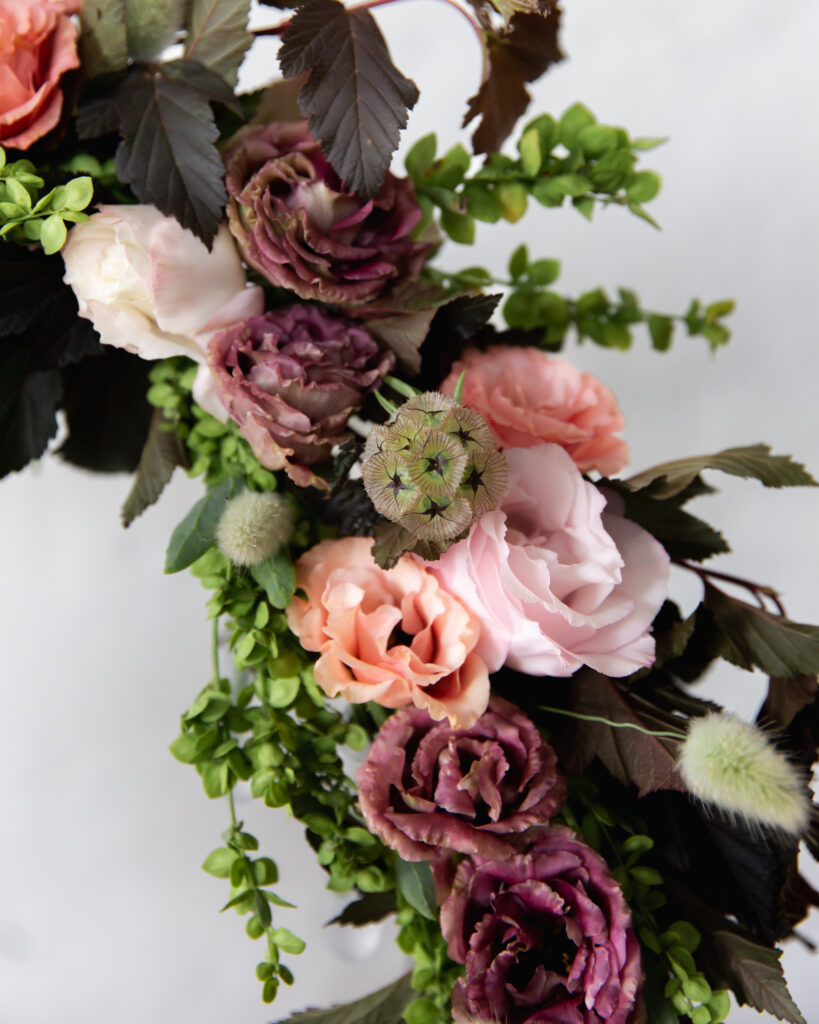
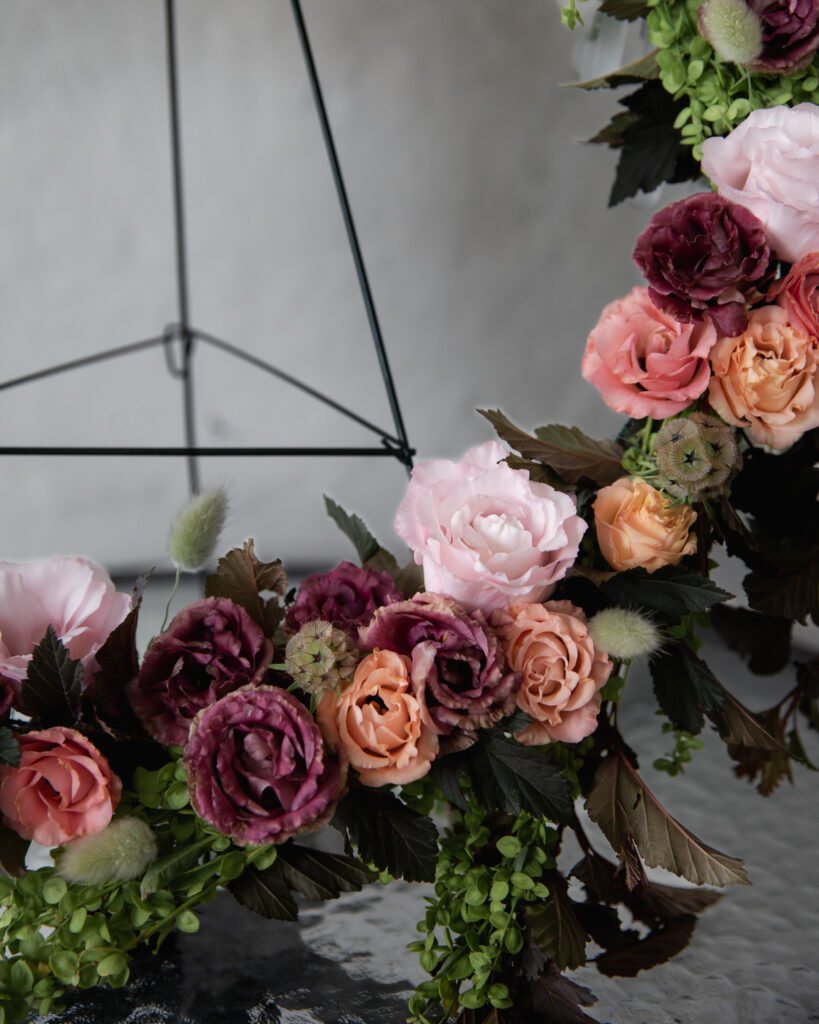
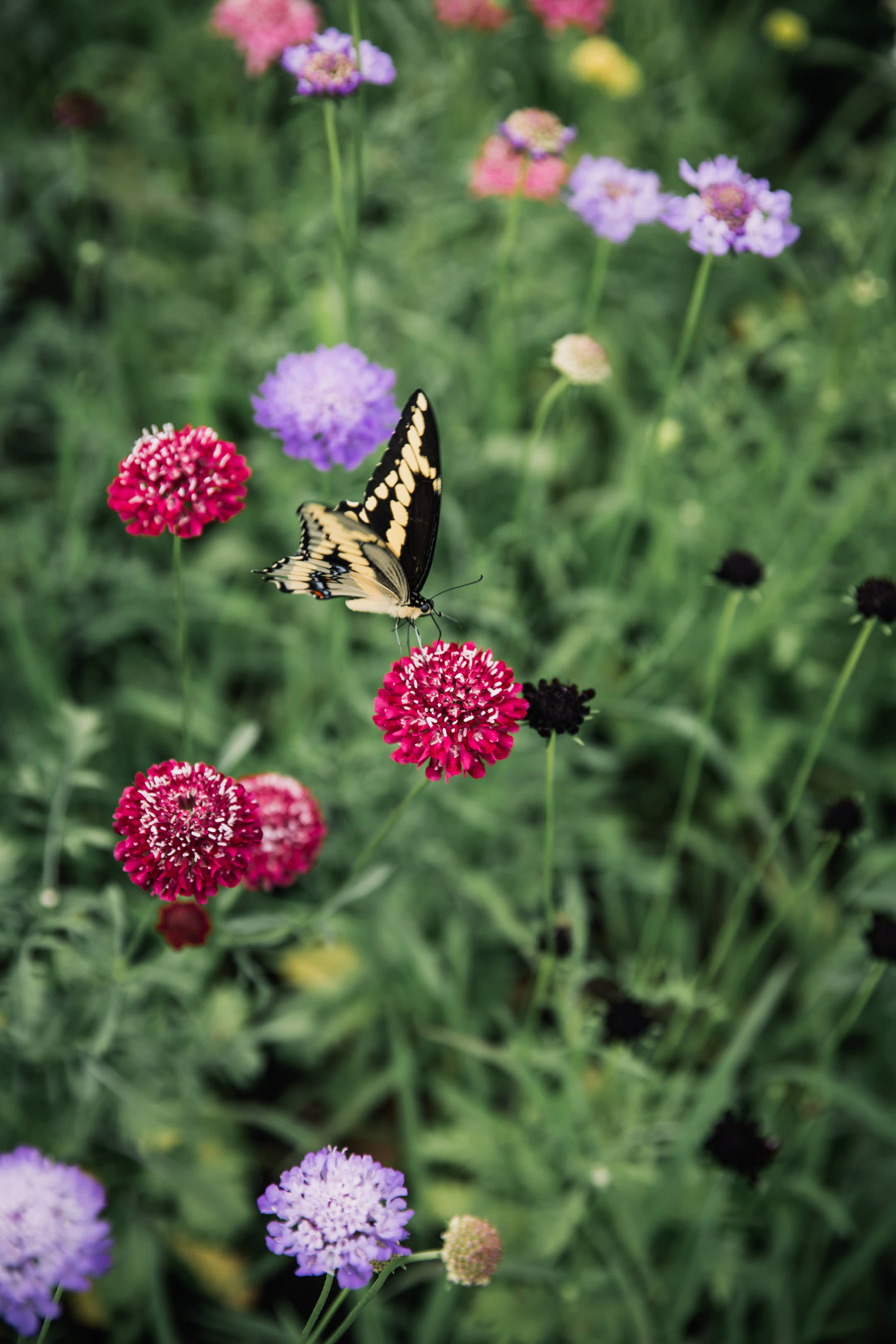
Pricing: N&B and BTS
BOSTON Ornamental Terminal Prices as of 26-DEC-2023:
SCABIOSA: OFFERINGS LIGHT. per bunch EC long 17.50-18.00 mostly 17.50 med 14.00.
$17 is my florist price. I don’t typically sell scabiosa by the bunch for retail.
Design: BTS only
I love weaving scabiosa into design work. It’s easy to sneak into an arrangement or bouquet at the end. It adds that perfect garden vibe. Bud stage (especially the larger Scoop Scabiosa) are perfection for wearables like crowns, corsages, and boutonnieres.
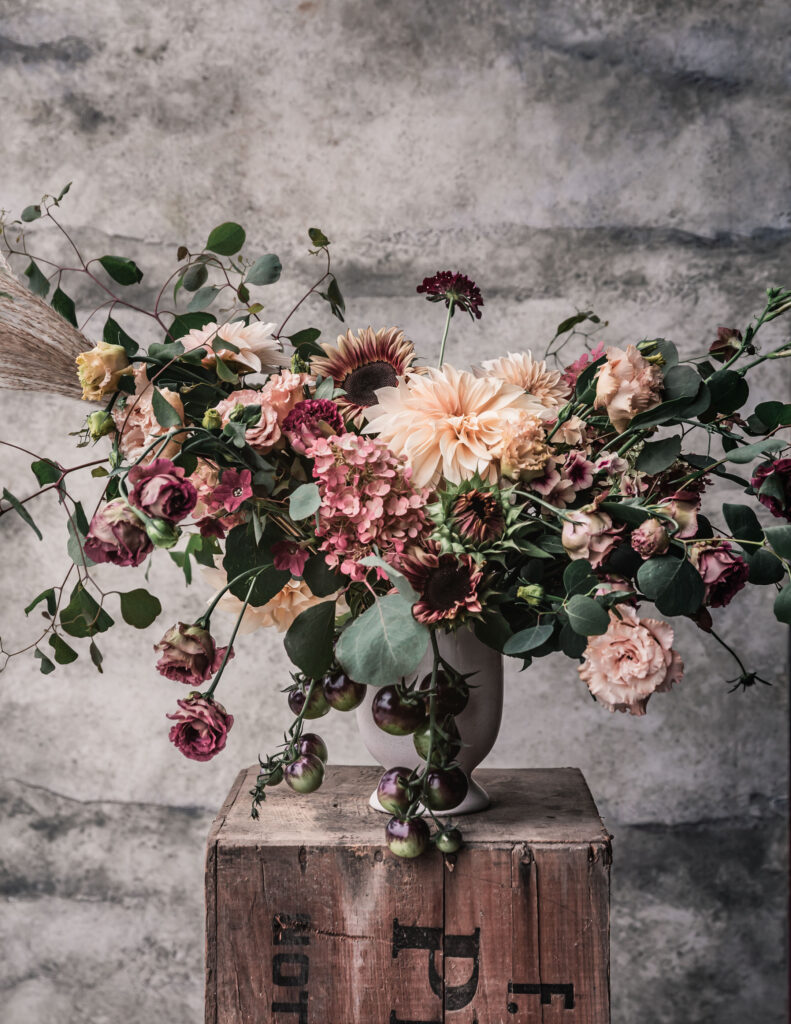
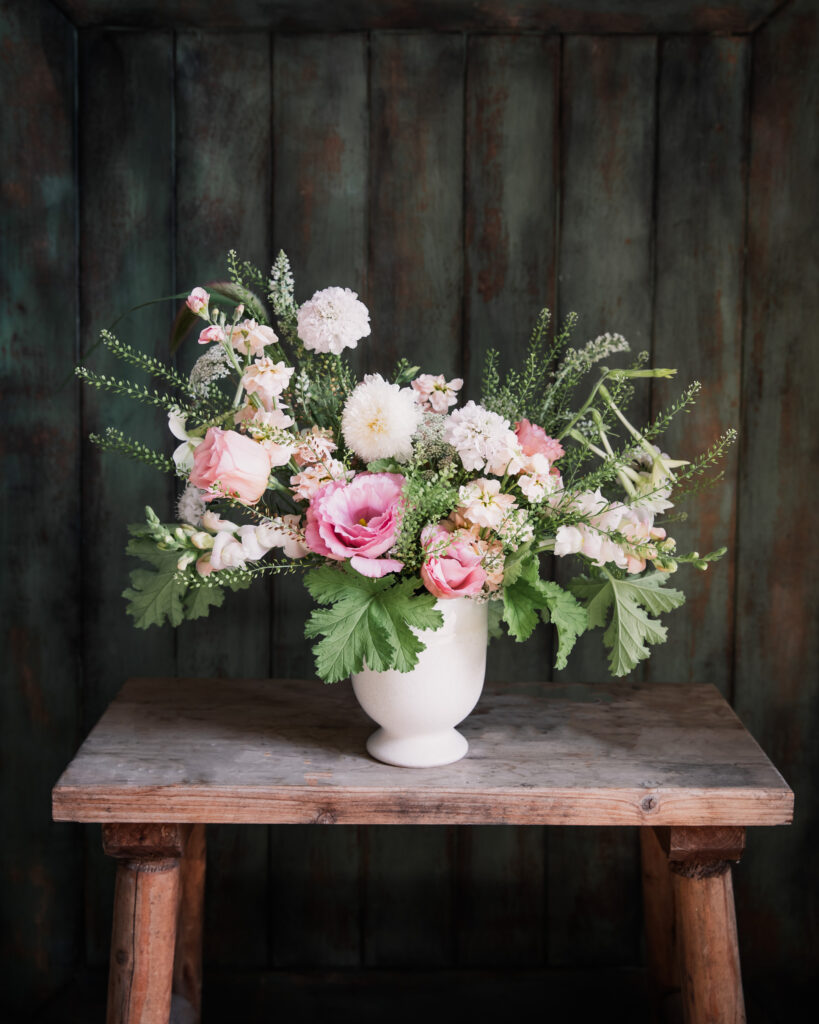
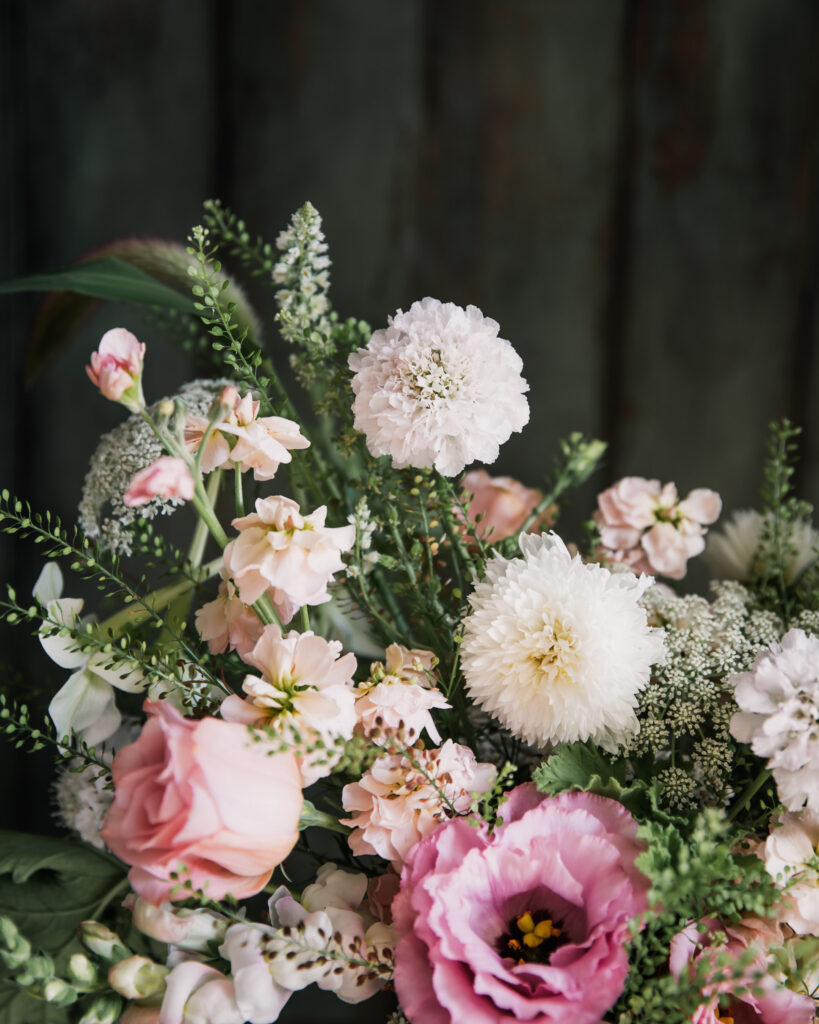
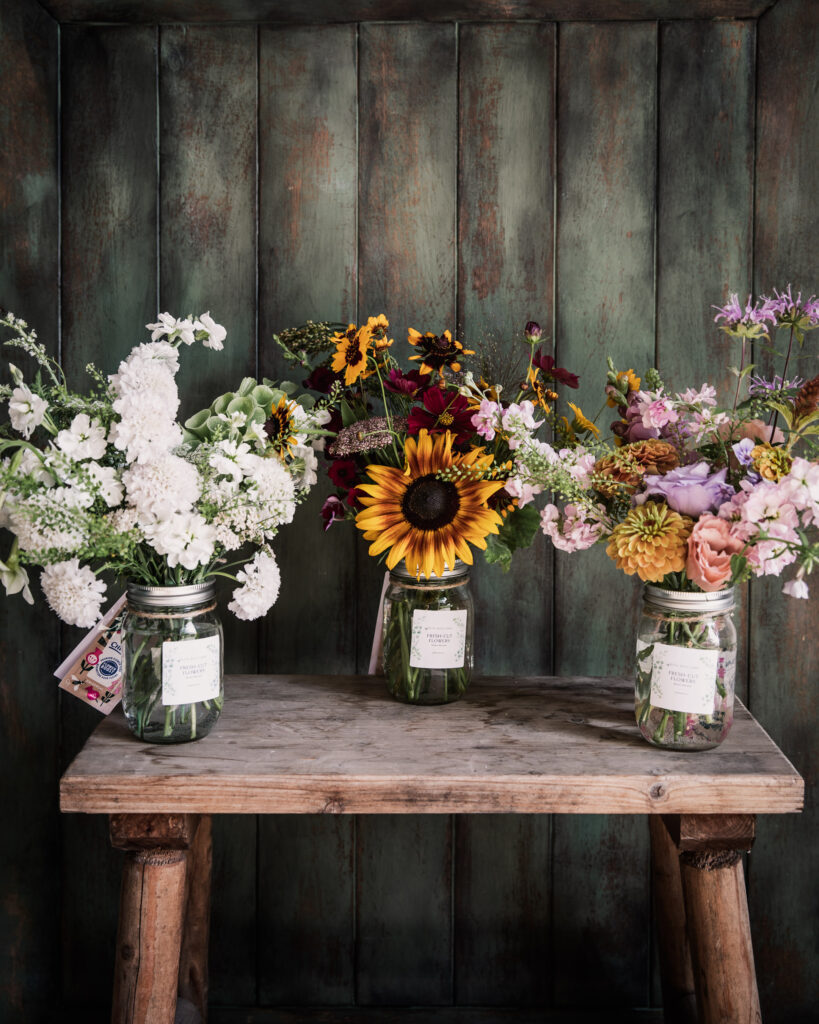
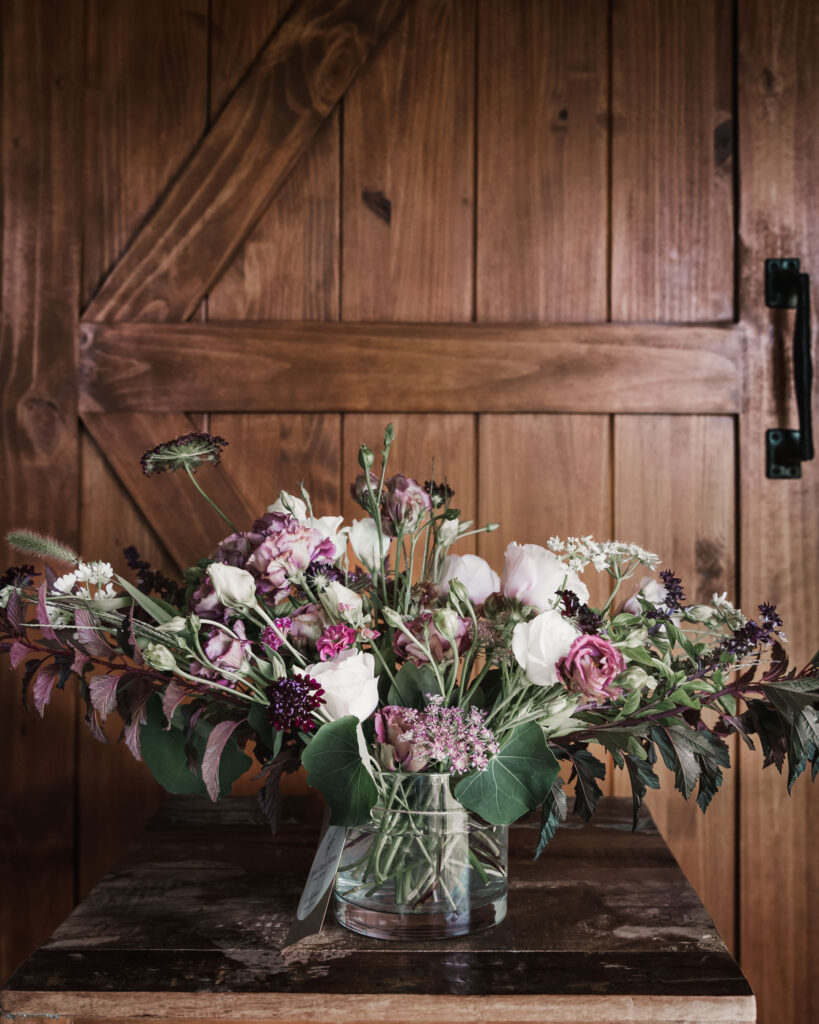
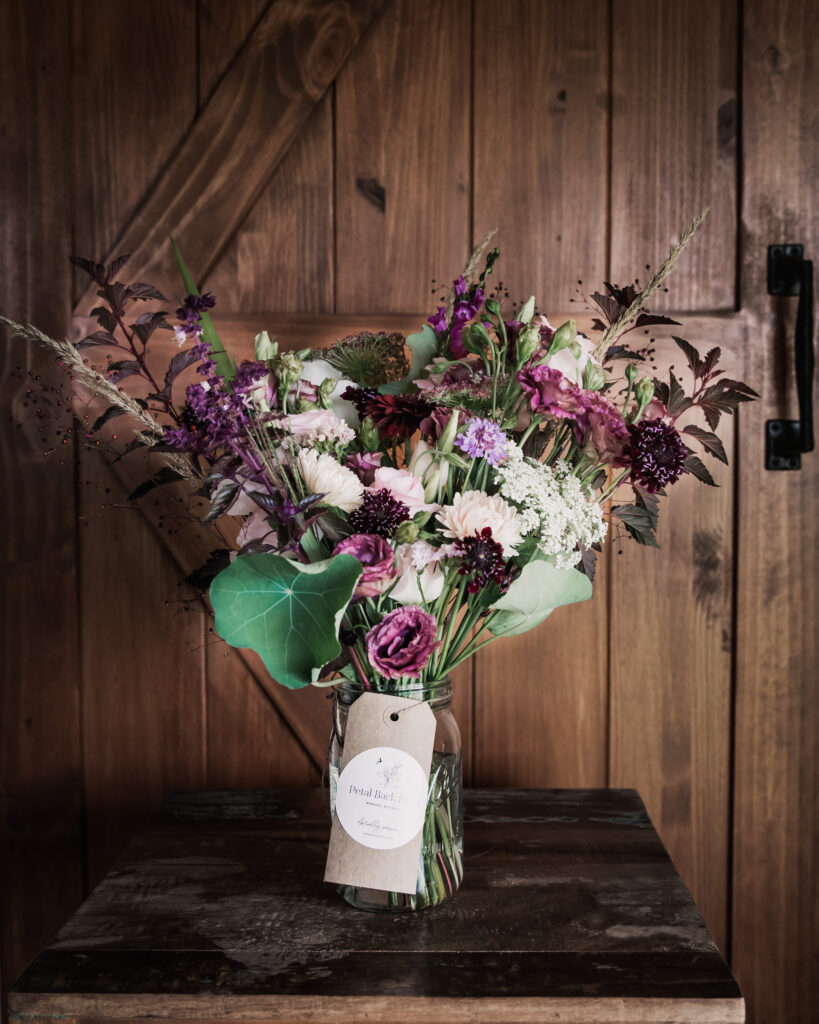
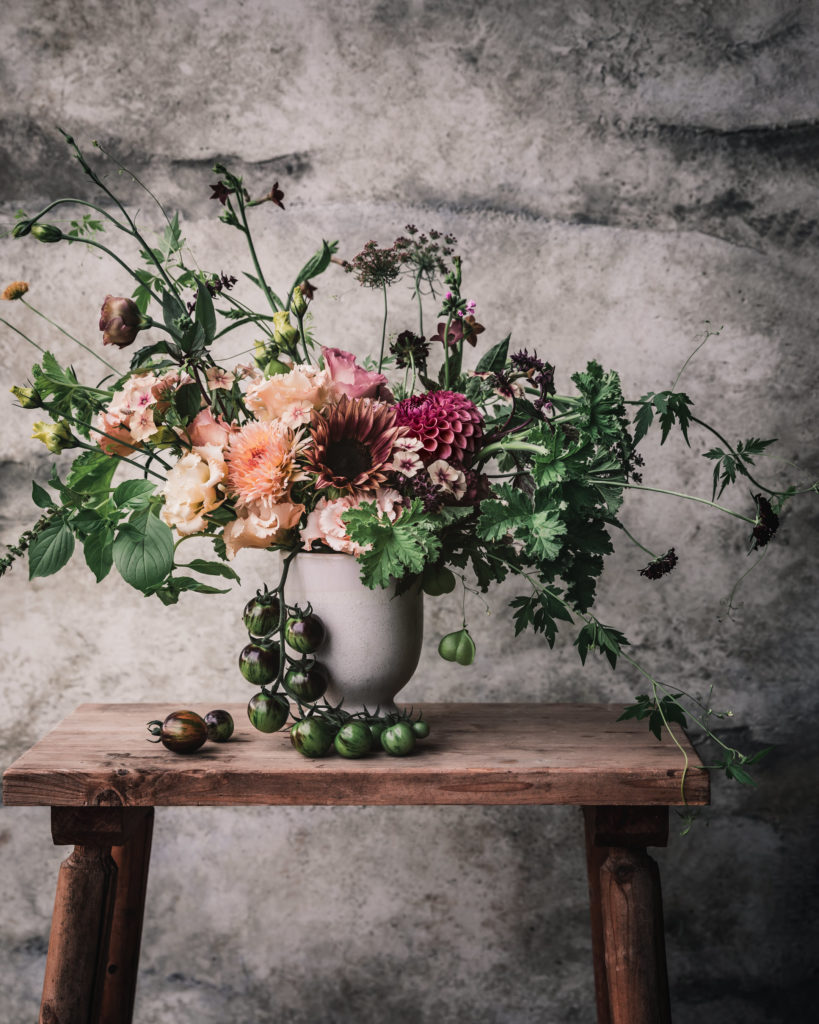
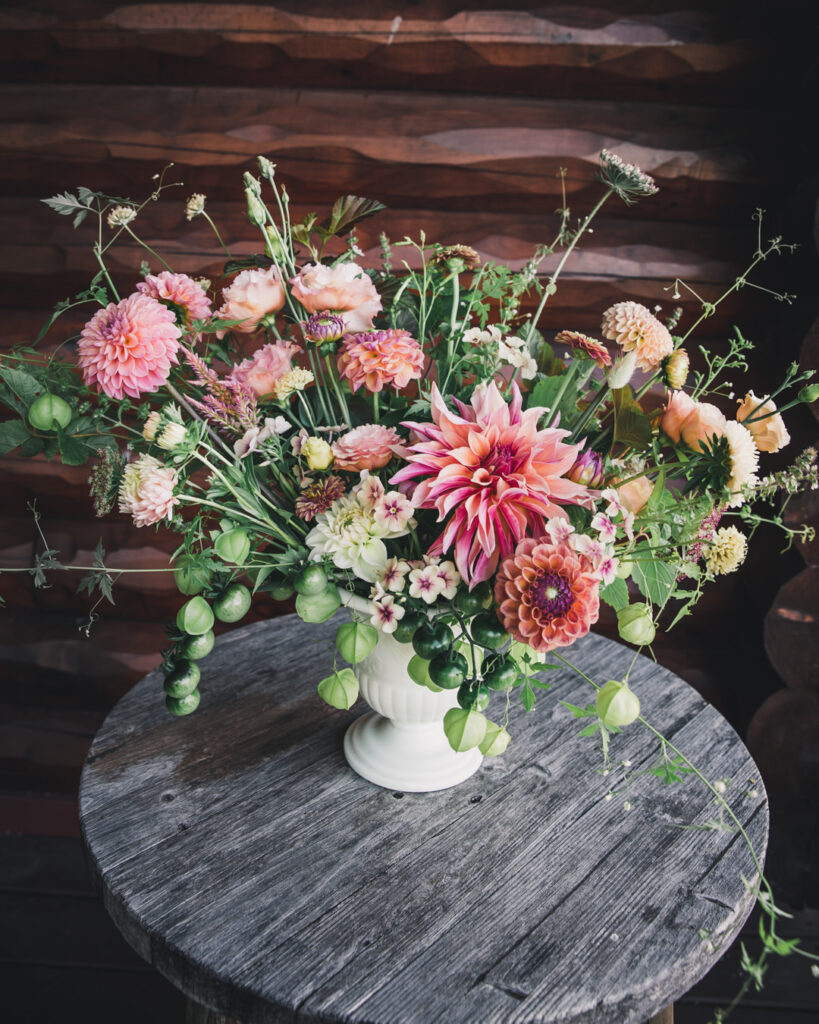
Wrap Up
OK, my friend, that is IT for this Plant Profile. What do you think? Did you find some useful nuggets? Be sure to save a PDF copy using the buttons below, so you can always refer back to it.
Have any questions or something you want to share with me or others? I know I say this ad nauseam, but I truly believe in the power of the collective and that we all have something unique and powerful to share, so please leave a question or share a comment below. We’re all better for it, and I thank you in advance!
Cheers pal!
comments +